By Tom Wintaugh | June 8, 2023

See why top ecommerce brands use Miva’s no-code platform to run
multiple stores, manage massive catalogs, and grow their revenue.
The key to leveraging the sales multiplier effect in ecommerce is simple: leverage the tools you already have to win more sales. A modern ecommerce platform is loaded with features and capabilities which can drive more conversions simply by improving the shopping experience. No matter what products you sell, or how unique your industry requirements are, your master ecommerce growth strategy begins with your platform, the most useful ecommerce sales multiplier in your arsenal. Here are 7 of the most effective ecommerce strategies for cranking up your sales results—and they all start with the platform your business is built upon.
There is no great conversion driver than a fast, responsive website. In fact, a page loading delay of just a single second can be enough to cost your business tens or even hundreds of thousands of dollars per year. And with 71% of traffic to online retailers coming from phones, a responsive site that loads like lightning on a variety of mobile devices is essential for reaching shoppers on the go.
Site speed plays a critical role in enhancing user experience, improving search engine rankings, and reducing cart abandonment rates. We wrote in more depth about the role of site speed in determining your bottom line here. To multiply sales, prioritize a site that loads quickly, with a streamlined layout that makes it fast and easy to shop.
DTC selling continues to be a growing trend for manufacturer-brands that want the control, effectiveness, and higher margins of selling direct. An ecommerce platform which enables selling to B2B and DTC from one central control doesn’t just streamline operations, it actually opens up a vast new revenue stream for conventional wholesalers or manufacturers with untapped consumer audiences. Sellers should consider developing website front and back ends which make it possible to multiply the audiences you are reaching.
Optimizing your ecommerce site for conversions is an integral part of any successful ecommerce sales strategy. From faceted search to exit-intent pop-ups, there are many ways to fine tune your ecommerce platform to boost conversions—we highlighted a whopping 15 ways to achieve better CRO here. The most obvious (and most effective) conversion optimizer is simplified website navigation: make it easier for customers to find what they need and watch sales increase.
Owned channels refer to any marketing platforms that are directly controlled by a business. The most popular owned marketing channel is often a business' email campaign, which we describe in detail here. Communicating through owned channels is a way for businesses to totally control their messaging and engage with their audience. The ecommerce website can act as a “central station” which coordinates and promotes content that goes out through various owned channels, such as blogs, emails, mobile apps, podcasts, webinars, or social media profiles. Ultimately, all of this material can direct traffic back to the website, connecting buyers with the items and information which are most specifically relevant to them.
Reducing cart abandon is a major priority for sellers, and an excellent way to do this is by improving checkout. As your “last chance” to close a sale and make a lasting good impression with customers, checkout can be transformed into a top conversion driver by implementing more payment gateways, streamlining UI, and taking advantage of up-sell/cross-sell features just before payment. We wrote more about how to improve checkout here.
Every way you can personalize the shopping experience for specific users, accounts, or groups of buyers can be a lucrative ecommerce sales multiplier. Personalization can come in the form of promotional content, ordering processes, shopping history, pricing, and so much more. The question for sellers is…when buyers visit your site, do they feel that their individual and needs are being respected and served? If not, how can you demonstrate to shoppers that you fully understand their pain points and are ready with the specific solution they need?
Customer Acquisition Cost (CAC) and Customer Lifetime Value (CLTV) are vital metrics in ecommerce. Working towards a high CLTV to CAC ratio ensures you're directing your acquisition resources effectively and focusing on the most profitable segments. This strategy is a key driver in accelerating ecommerce growth—we shared important strategies for lowering CAC relative to CLTV here.
Each of these online selling best practices can significantly multiply your ecommerce sales, but they all have one thing in common—the strength of the ecommerce platform. Staying agile in ecommerce means learning how to leverage all of the amazing cost-cutting, revenue-driving features “under the hood,” and then adapting to customer needs and changing conditions on the fly. The best ecommerce growth strategy starts by making sure you’re taking full advantage of the amazing selling technology that’s already at your fingertips.


Katy Ellquist, Miva’s Digital Marketing Strategist, is an accomplished writer, marketer, and social media analyst who has created sophisticated content campaigns for a broad range of professional clients. She brings to Miva a complex understanding of ecommerce trends and techniques, building upon extensive digital agency experience and a prior role as direct liaison to Miva’s top accounts. Katy is a regular contributor to the Miva blog, covering essential ecommerce topics like design & development strategy, site optimization, and omnichannel selling, with the goal of increasing the actionable knowledgebase of the entire Miva community.
Love it? Share it!
No worries, download the PDF version now and enjoy your reading later...
Download PDF